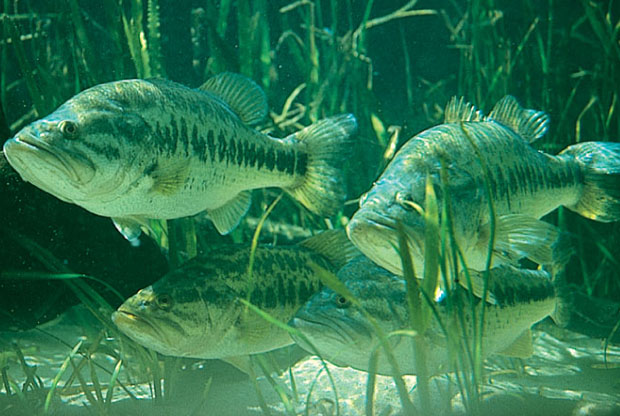Keeping a fly in a big largemouth bass’s mouth often proves more difficult than getting it there. Here are 8 techniques that will make the difference between showing off a photo and telling a story about the one that got away
1. Sharp Hooks
Few hooks are sharp enough right out of the box. Even those that arrive sharp will become dull when stuck in a stump or bounced off a boat motor. Carry a hook hone, and use it. If you don’t have a hook hone, a diamond fingernail file is a cheap substitute. Check the sharpness of the hook point when the fly is tied on the leader and frequently while fishing. I have conducted several experiments, and it is conclusive that flies with the barbs mashed down are less likely to be thrown by a leaping bass. This stems from the fact that on bass-size hooks, the barb is large enough to hinder complete penetration into the mouth. Of course, a barbless hook also means a Band-Aid instead of a trip to the emergency room when a fly is stuck in the back of a fishing buddy’s head.
2. Rod Position
Repeat after me: “If the fly is in the water, the rod tip is on the water.” Over the past nineteen years as a guide, the most frequent thing I have said is, “Put your rod tip on the water.” Placing the rod tip on the water eliminates slack. Eliminating slack helps with three important tasks:
Fly Action: Flies have a much better stop-start action. Poppers “pop” easier with less effort.
Strike Detection: Even the most subtle strike can be felt. The suction-strike method of feeding used by largemouth bass, especially big bass, often yields very little movement of the fly.
Hook Set:The hook set begins immediately and with much more force.
3. Strip Set
Last year, a friend of mine (who happens to be an Orvis-endorsed guide with a degree in physics) and I conducted an experiment. We attached a force gauge to the end of a piece of tippet on a tip-flex 8-weight fly rod. The one holding the force gauge would make a tug on the tippet, and the other one would set the hook just like he had a strike while fishing. At a distance of thirty feet, the average force we could generate was a little less than six pounds for strip strikes, and just shy of four pounds for rod-tip sets. While both hook-set techniques measured much less force than expected (see item #1 “Sharp Hooks” above), a strip set increases the power of the hook set by 50%.
4. Upward Pressure
Because most bass lakes have a jumble of downed timber and thick vegetation on the bottom, upward pressure, as opposed to the usually side pressure, is best. Once the bass is solidly hooked, put the rod up to the 11 o’clock position and keep it there. Lifting the head of the bass will cause it to spend time trying to dive deeper, thus staying closer to the boat rather than running away. Never point the tip of the rod at the fish. Without the cushioning effect of the fly rod, tippet will break or a hook will pull out, quickly.
5. Don’t Touch That Reel
Unless a bass puts itself on the reel, play it by hand. Next to a poor hook set, more bass are lost while cranking up excess line than any other way. While playing the bass by hand, use short strips, keeping both hands together instead of making long three foot long strips.
6. Push the Butt—Use the wrist to keep the butt of the rod flexed toward the bass. This flexes the most powerful section of the rod and will quickly wear down the fish so it can be landed.
7. Surrender Line Grudgingly
Any place a bass wants to go once hooked is a bad place as far as the angler is concerned. Let line out only when absolutely necessary; “let her run” isn’t a phrase from the language of bass on the fly rod. Take a few minutes and educate your hands about how much pressure will break the tippet.
8. Keep It Up All the Way
Many, many bass are lost at boat side. Usually this is because the angler lowers and straightens the rod. Keep the rod tip up and rod flexed until the bass is in hand. It is best to raise the rod and reel above the head while kneeling to reach the fish.
Following eight simple rules will help keep a big bass on the line, despite its best efforts to break the connection.
Rob Woodruff operates Woodruff Guide Service in Quitman, Texas.
Source ORVIS


